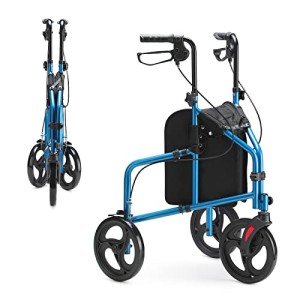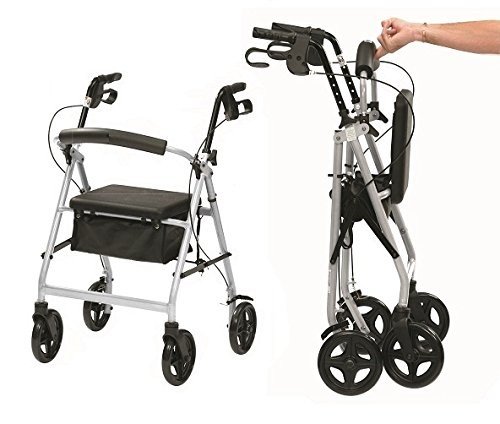What's The Job Market For Walking Frame Professionals?
페이지 정보

본문
Understanding Walking Frames: Features, Benefits, and Considerations
Walking frames, likewise called walkers, are important mobility aids designed to provide stability and assistance for people who might have problem with balance, coordination, or strength when moving. These devices can considerably improve the lifestyle for the elderly, individuals recuperating from surgical treatment, and those with chronic health conditions affecting mobility. This post will look into the different types of walking frames, their benefits, proper usage, and key considerations for users and caretakers.

Kinds Of Walking Frames
Walking frames come in numerous variations to accommodate various user needs. The primary types consist of:
Standard Walking Frames: These are fundamental freestanding frames that supply maximum stability. Users need to raise the frame with each action, making them ideal for people with great upper body strength.
Two-Wheeled Walkers: These frames have two front wheels, permitting smoother motion. They are ideal for users who can handle some weight-bearing and need less lifting.
Four-Wheeled Walkers (Rollators): Designed with four wheels, a seat, and hand brakes, rollators provide convenience and safety. Users can walk without raising the frame, making them suitable for those with minimal endurance or strength.
Knee Walkers: These are designed for individuals recovering from foot or ankle injuries. Users rest their knee on a padded cushion while pushing themselves forward with their other leg.
Table 1: Comparison of Walking Frame Types
| Walking Frame Type | Main Features | Best Suited For |
|---|---|---|
| Basic Walking Frame | No wheels; needs raising | Users with great upper body strength |
| Two-Wheeled Walker | Front wheels; much easier maneuvering | Users needing moderate support |
| Four-Wheeled Walker | Wheels, seat, brakes | Users requiring stability and rest options |
| Knee Walker | Padded knee rest; mobile | Users with lower leg injuries |
Benefits of Using Walking Frames
Walking frames provide various benefits that boost mobility and promote self-reliance. These benefits include:
Increased Stability: Walking frames offer a stable platform, reducing the danger of falls.
Enhanced Confidence: By using assistance, users can feel more safe while walking, which enhances their self-confidence in mobility.
Versatile Use: Walking frames can be utilized indoors and outdoors, accommodating various surface areas and environments.
Reduced Physical Strain: They relieve the physical problem on the user's legs and back, enabling individuals with pain or weakness to walk longer distances.
Support of Physical Activity: Regular use can promote mobility and aid preserve physical activity, which is essential for overall health.
Key Considerations for Users and Caregivers
While walking frames provide considerable benefits, there are a number of essential factors to consider to make sure optimal use:
Proper Fit: Walking frames should be adapted to the appropriate height for the user. When standing directly, the elbows ought to be slightly bent when holding the manages.
Weight Capacity: Each walker has a maximum weight limitation. Users must guarantee they choose a Walking Frame - such a good point - that can effectively support their weight.
Surface Suitability: Users need to consider where they will primarily use the walker. Four-wheeled walkers are much better fit for outdoor use on uneven surfaces.
Maintenance: Regular look at brakes, wheels, and structural stability are essential to ensure safety.
User Training: Proper training from healthcare professionals can assist users and caretakers understand how to use walking frames safely and efficiently.
FAQs about Walking Frames
Who can benefit from utilizing a walking frame?
- Individuals with balance issues, elderly people, those recuperating from surgery, and those with chronic mobility issues can gain from using walking frames.
Can walking frames be utilized outdoors?
- Yes, many walking frames, especially four-wheeled walkers, are developed for both indoor and outdoor use.
How do I select the ideal walking frame?
- Consider your mobility needs, environment, weight capacity, and any extra functions like seats or storage compartments.
What should I do if I feel unsteady using a walking frame?
- Seek advice from a health care professional or physical therapist for assistance on proper usage and change of the walking frame.
Are there any threats connected with using a walking frame?
- If not used properly, walking frames might cause falls. It's essential to ensure correct fit, adjust them properly, and practice safe walking strategies.
Walking frames represent an important tool for increasing mobility and self-reliance for many individuals dealing with physical challenges. By understanding the various types offered, their benefits, and the factors to consider associated with their use, users and caregivers can make educated decisions about choosing and making use of the right walking frame. With the best support, lots of individuals can restore confidence in their mobility, enhance their lifestyle, and take necessary actions towards self-reliance.

- 이전글Discover How Sureman Ensures Safe Betting Sites Through Effective Scam Verification 25.07.10
- 다음글Cultivating Character: The Significance of Value-Based Education in India 25.07.10
댓글목록
등록된 댓글이 없습니다.


